
The snowy owl is an amazing arctic species with striking white plumage and glowing yellow eyes. This article provides 10 incredible snowy owl facts!
1. Snowy Owls Can Fly Up To 50 Mph

The snowy owl has an incredible speed of up to 50mph.
©Bruno De Faveri/Shutterstock.com
Snowy owls are found all throughout North America and can reach speeds of up to 50 mph (80 km/h) in the air and are known to hunt in a wide variety of environments, including the tundra, meadows, marshes, and fields.
2. Their Resting Heart Rate Is 200 BPM
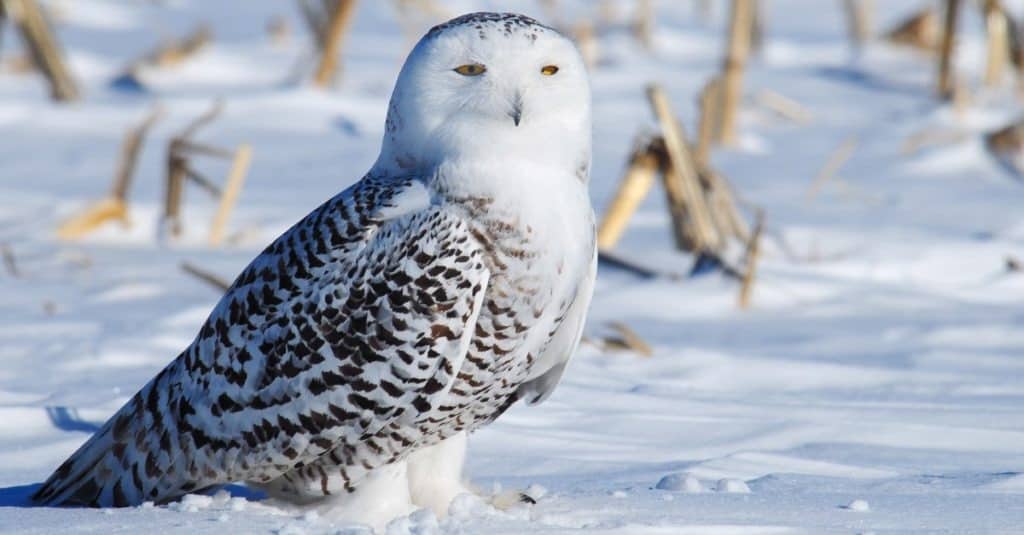
A snowy owl’s resting heart rate is 200 beats per minute.
©AJ Gagnon/Shutterstock.com
Because of their Arctic habitat, snowy owls must work hard to keep warm and find food over the long winter months. While actively hunting, its heart rate may increase to up to 300 beats per minute. During sleep, a snowy owl‘s heart rate drops to around 200 beats per minute.
3. These Owls Eat Their Prey Whole
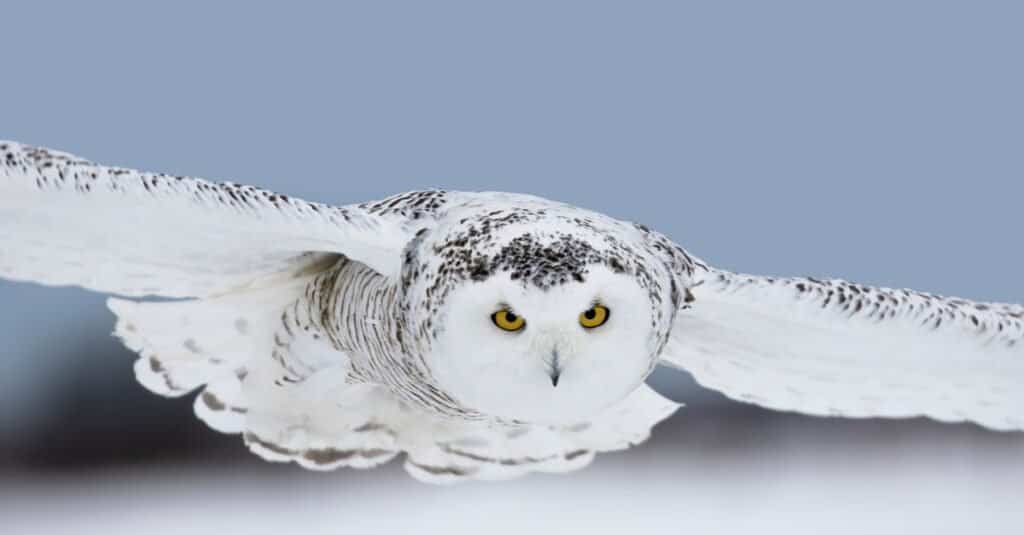
Snowy owls swallow their prey whole.
©Jim Cumming/Shutterstock.com
The snowy owl’s stomach allows them to swallow animals up to one-third of their size. They devour animals whole and can eat huge meals. Their stomach has a gizzard and proventriculus to aid in this process. When food goes through these organs, it compacts into boluses. These boluses are then excreted or defecated.
4. Snowy Owls Are Ground Nesters
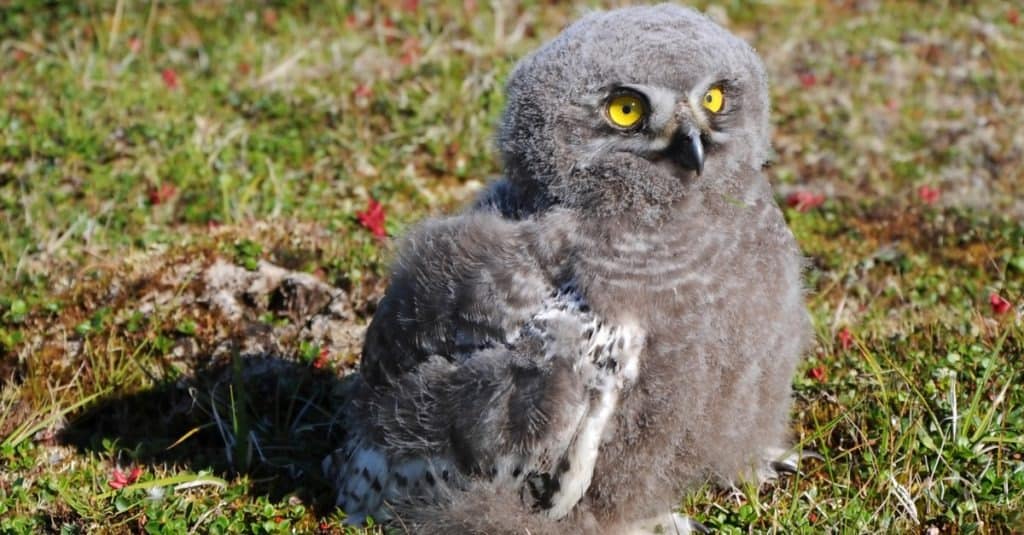
Snowy owls typically nest on the ground.
©dimcha/Shutterstock.com
These birds are ground nesters who nest in a burrow, excavation, or depression. The males perform much of the hunting while the females raise the young. Snowy owls nest on the ground, sometimes under dense foliage or deep snow cover, to avoid predators like foxes and coyotes.
5. They Often Mate for Life
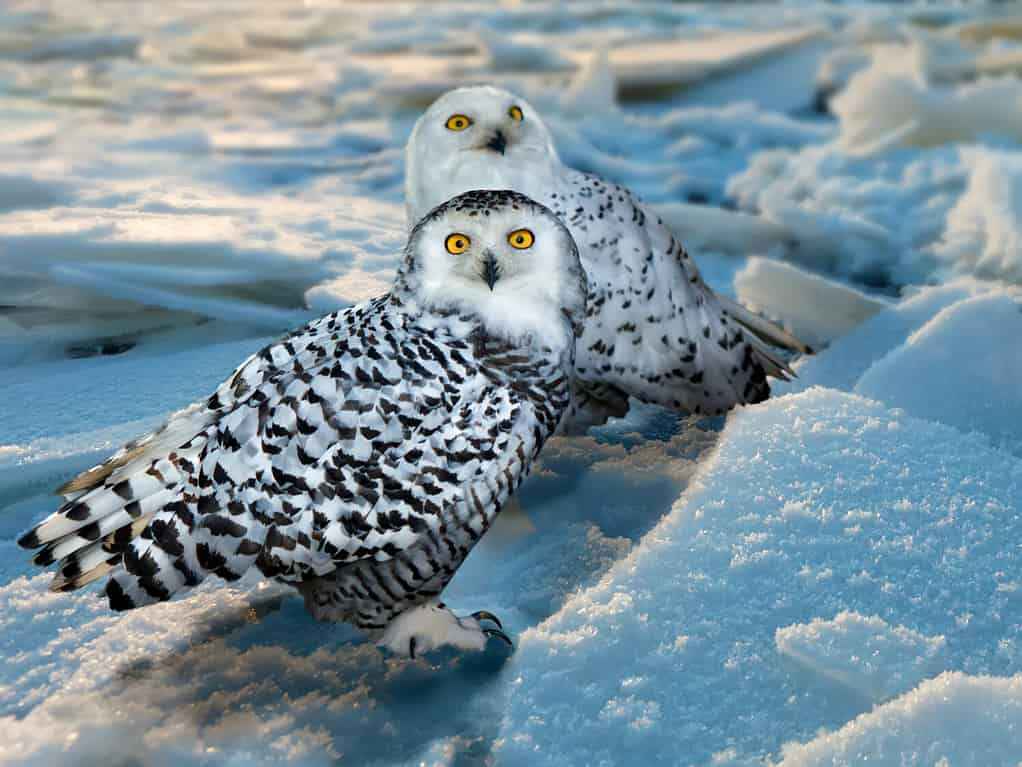
Snowy owls are monogamous.
©BearFotos/Shutterstock.com
Lifelong monogamy is the norm for snowy owls. This suggests they are monogamous, as opposed to the polyamorous or opportunistic behavior of some animals. They pick one partner for life with whom to raise their offspring.
6. They Can Spin Their Heads Around 270 Degrees
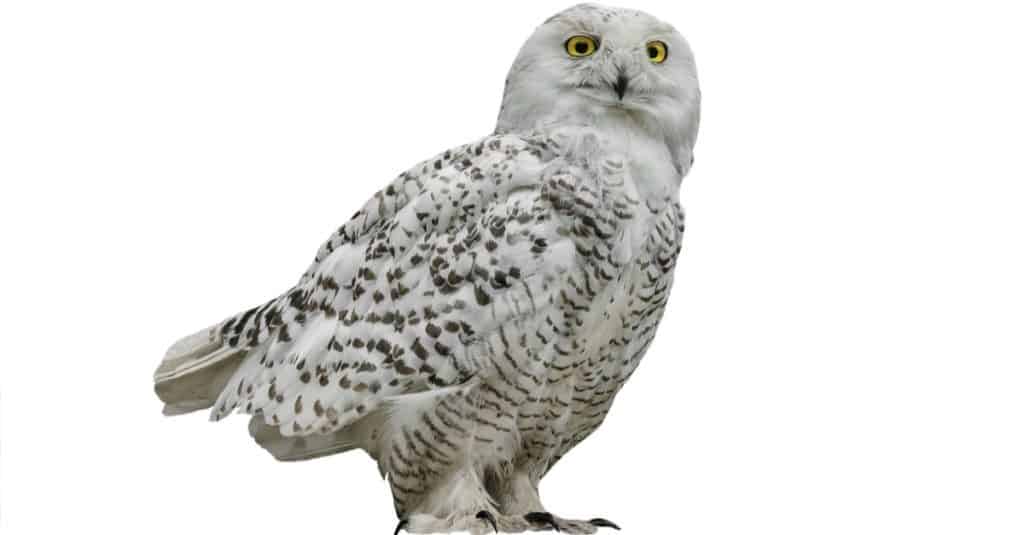
Snowy owls lack a joint between their head and spine, allowing rotation.
©photomaster/Shutterstock.com
Flexible necks allow these critters to spin 270 degrees in either direction, so they can view practically anything without even moving their eyes. They can tilt their head so much because of an extra neck vertebra they possess. Owls have twice as many vertebrae as humans. However, snowy owls have one occipital joint with cervical vertebrae.
7. Females Are Up To 20% Larger Than Their Male Counterparts

Female snowy owls are larger than males.
©Jim Cumming/Shutterstock.com
Female snowy owls can grow up to 20% larger than their male counterparts. Male owls are smaller because they use less energy during mating season. Females need greater mass to survive the long winter months without food sources, therefore, they get bigger while hunting little rodents. They need this extra fat for reproduction.
8. These Owls Hunt with Sound
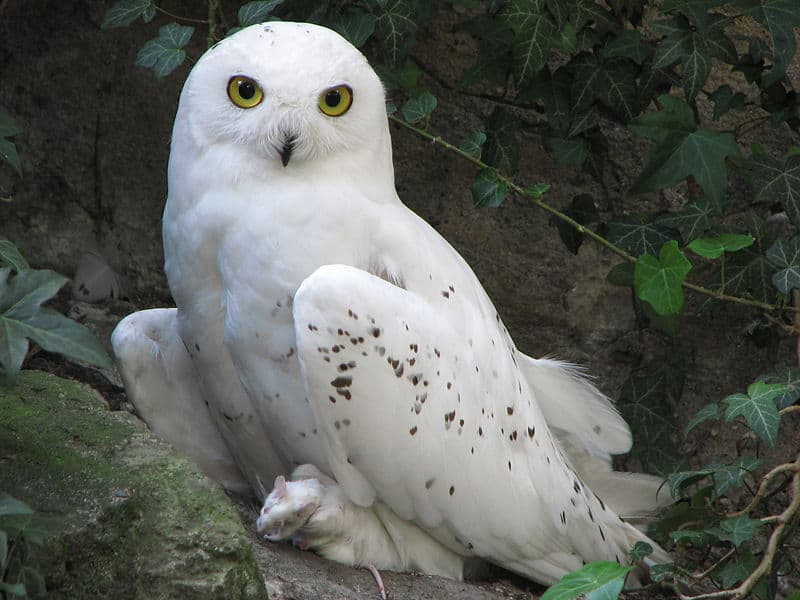
These beautiful owls are always patient while listening to sounds during a hunt.
Snowy owls have a special adaption that lets them hunt in darkness. Bristles around their eyes operate as acoustic antennae and bounce sound waves to the owl’s ears. They can hunt without light, which is crucial in the cold. This talent is useful in winter when most animals are hibernating or burrowed underground.
9. The Snowy Owl is a Top Carnivore
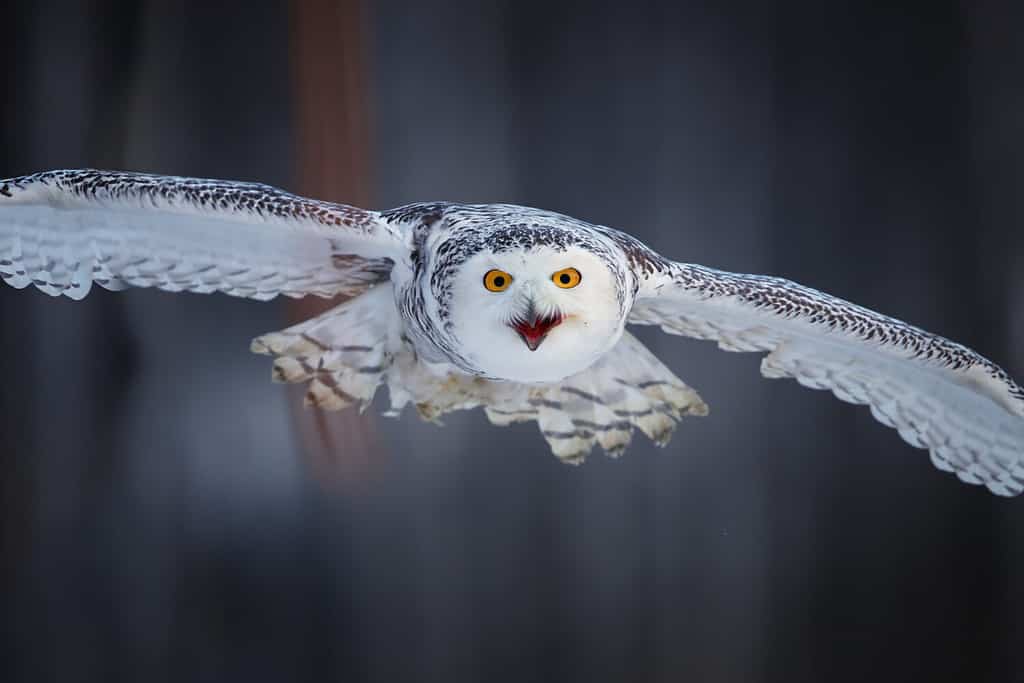
Snowy owls are aggressive predators.
©Martin Mecnarowski/Shutterstock.com
This species is a carnivore, despite its fluffy moniker. In fact, it is one of the most aggressive bird predators on Earth. Snowy owls eat rodents they discover under the snow, such as lemmings and voles. Sometimes they eat arctic hares and ducks.
Despite being an apex predator in some parts of North America, they have predators. Snowy owls may be attacked by wolves, foxes, or coyotes.
10. They Have 3x The Vision of Humans
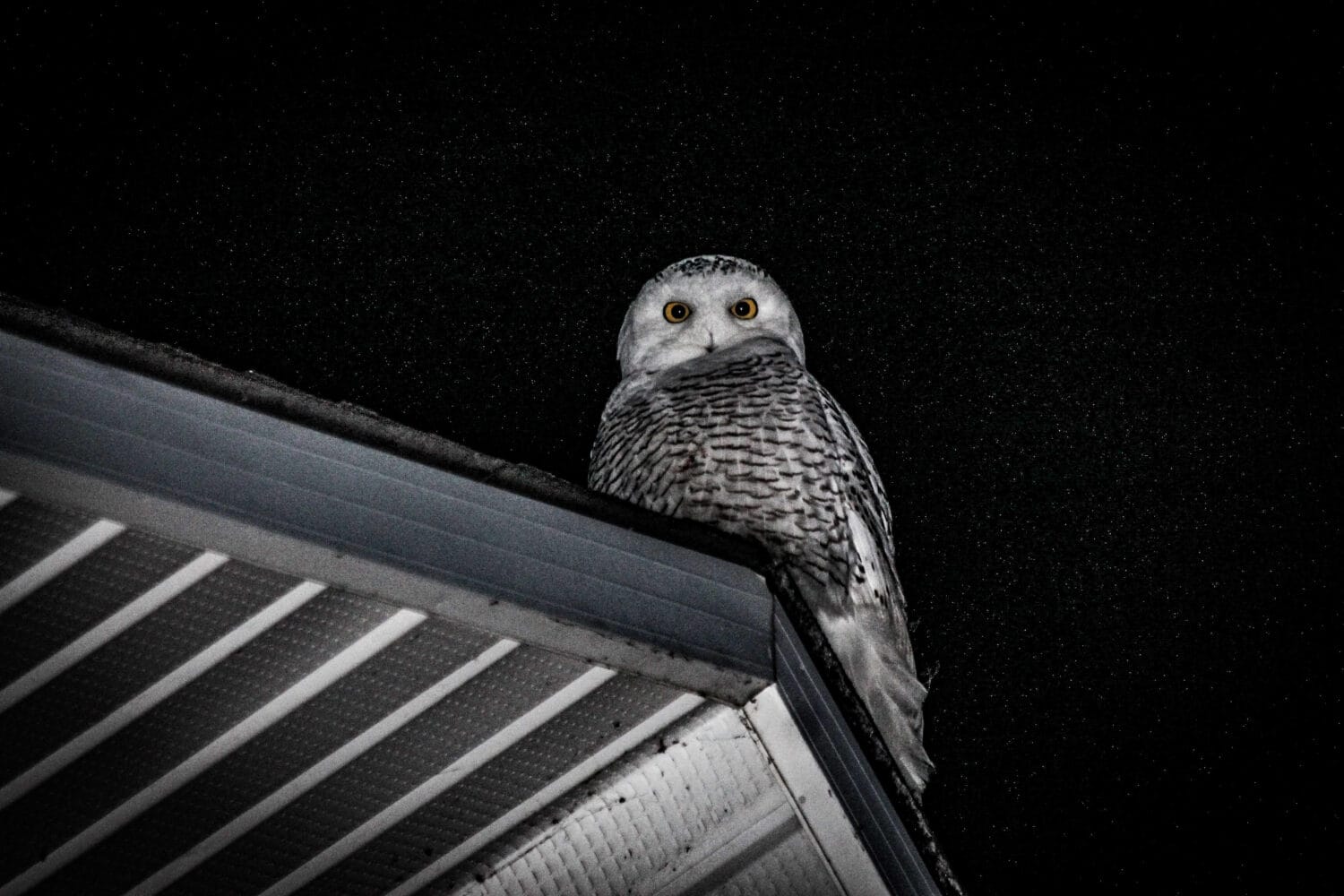
Snowy owls have excellent night vision.
©Elsmore Media/Shutterstock.com
Snowy owl eyes can see in low light, even when there’s snow. They can see three times better because of tapetum lucidum under their eyes, which bounces incoming light across the retina so it can be absorbed again, improving night vision.
The photo featured at the top of this post is © Jim Cumming/Shutterstock.com
Thank you for reading! Have some feedback for us? Contact the AZ Animals editorial team.






